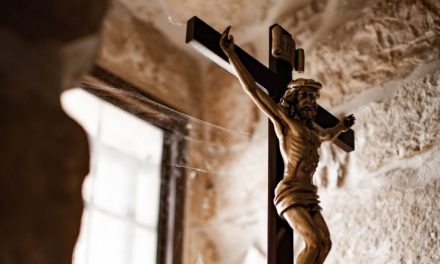 It’s rare that I look forward to meetings, much less meetings that require sitting inside a conference room for days, that include more that forty people who probably test as “leaders” rather than followers, and that likely involve some sort of drawn-out discussion or even disagreement. Yet for the last four years, I’ve attended nine meetings that fit that bill and my only disappointment is that it’s over.
It’s rare that I look forward to meetings, much less meetings that require sitting inside a conference room for days, that include more that forty people who probably test as “leaders” rather than followers, and that likely involve some sort of drawn-out discussion or even disagreement. Yet for the last four years, I’ve attended nine meetings that fit that bill and my only disappointment is that it’s over.
The U.S. Conference of Catholic Bishops’ National Advisory Council, or “NAC,” was established by the bishops in 1968, three years after the Second Vatican Council. The primary role of the NAC is to assist the Bishops by providing them feedback on current issues in an organized way. I just finished a four-year term as a member of the NAC, and I can honestly say it was the most fruitful and rewarding experience of the American Church I have had to this point in my life.
Like most Catholics, I had no idea the NAC existed until I was asked by my bishop to serve. I was lamenting with a fellow member about how unknown the NAC is, and we agreed it is one of the best kept secrets of the American Catholic Church. The NAC’s most public presence is when their chairperson addresses the entire body of Bishops at their fall and spring meetings, visible to anyone willing to watch the live feed of the meeting on the USCCB’s website. I’ll say what you’re thinking: that translates into very few Catholics.
That means a tiny percentage of people know that the bishops have a group comprised mostly of lay people from which to hear the thoughts and concerns of the Church on the ground, or rather, in the pews. I feel privileged to know first-hand not only how hard that group works, but also how much the bishops value and listen to them.
When I boarded the plane for my first meeting, my stomach was in knots. How could I, an ordinary twenty-seven-year-old, serve on such a committee? It didn’t take long at the meeting to see that my fears were ungrounded. As a young woman in the Church, I had a lot to give. And most importantly, these people were willing to listen.
Almost every new member remarks after their first meeting how shocked they are at the amount of work that actually gets done. We spent a lot of time talking and discussing, but out of those discussions comes real, tangible work. Everyone has a chance to share what’s on their heart, and no one is belittled or disregarded. Most importantly, prayer is at the center of every meeting. Mass is celebrated each day. Every session begins in prayer. The Liturgy of the Hours is prayed in the morning and the evening. It is acknowledged openly and often that the Holy Spirit is the most important participant in any discussion, and if work has to stop in order to recenter the focus on Him, it does.
While working with the NAC, I encountered the face of the Church in America. Its fifty or so members include laity who work within the Church and outside the Church, men and women religious, priests, and a handful of bishops—from both the Eastern Church and the Latin Church. The members are from every region of the United States, reflecting the wide variety of ethnic and socioeconomic backgrounds, the vocational and occupational diversity, and the range of experiences that mold the Body of Christ into the varied group that St. Paul speaks of in 1 Corinthians 12. The NAC truly is “the Church in miniature.”
As you might expect, a group this diverse does not always agree on every issue. And that’s okay. Consensus is not the goal of NAC—providing feedback from the flock is. It’s important for our statements to honestly reflect the situation of the Church in the States. But regardless of how we might have disagreed, the dialogue was always charitable and open. Open, honest, fruitful—if only all debate these days could be as healthy as I found it at NAC!
Perhaps when I started my NAC term four years ago, I was worried about my ability to contribute in a valuable and useful way. After four years, not only am I reaffirmed in my belief that the Church does want what the “youth” have to give, I am also grateful for how much I was given. Those meetings gave me a profound understanding of the issues that face our Church today and the daily difficulties and joys of being a Catholic in the modern world. And while the work is important at NAC, the greatest gift I’ll take from that time is something we should receive from any encounter with Christ and His Church: a love for His people.
The Church is made up of people. I looked forward to those meetings not just because of the importance of the work, but because of the people I served alongside: the friends I made thanks to prayer, the common bond of love for the Church and eager willingness to serve Her, and the unique ability to openly discuss opinions on faith, politics, and other things that are so rarely dealt with civilly. It was an honor to be asked to serve, and I will always remain grateful to my bishop for giving me the irreplaceable opportunity to experience this Church in miniature.












